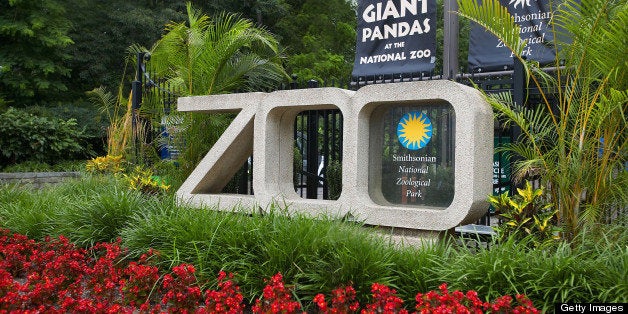
The following article is an excerpt from a post that first appeared on the website of ZooNation on October 20, 2015 and is reprinted below with permission from the author (Jordan Schaul).
Modern day zoological parks are more than curated collections of animals representing imperiled species at metropolitan campuses of the world's most populated urban centers. These living natural history institutions are also certainly more than mere entertainment attractions, which they are sometimes purported to be by critics, namely animal rights extremists with misplaced compassion.
Today's zoological parks inundate visitors daily with rich and dynamic nature content in conjunction with immersive live animal displays. Most accredited zoos offer informal nature education, which serves to supplement the conventional school science curricula taught to younger patrons.
Based on data from the World Association of Zoos and Aquariums, over 1,300 accredited zoos cater to more than 600 million visitors every year. Visitors appear to be commonly enticed to make return visits to these zoological attractions on a seasonal basis to see new exhibits and by the popularity of newborn animals. But the main premise and draw of the modern day zoo is the engaging nature of intimate encounters with charismatic species from giant pandas to apes and elephants. Zoos and related captive wildlife facilities offer substantial and irreplaceable experiences that more than expose people to the natural world. The live viewing of wildlife in such raw and unprecedented ways seems to leave a lasting impression for patrons. An education may only be as beneficial as what it confers in application. Zoos inspire people to talk about wildlife. They put the fate of wild populations in far away places on people's radar. They compel people to think on both an organismal (whole animal) and ecosystem level. They invoke people to care, eliciting an emotion that is more intense than what I believe televised documentaries and other media programs can invoke. Most importantly, zoos prompt people to get involved in some capacity in wildlife conservation and I think it is because meeting an animal ambassador in person generates not only a visceral experience, but one that is unique to each individual and each encounter.
I contend that zoos are pivotal players in science education because they raise awareness for the plight of so many species, but they also empower people to be proactive stewards of nature. They capitalize on opportunities to reach the public with conservation messages that often lead to direct action. They cultivate young naturalists who will undoubtedly influence our planet's future, some of whom will do so professionally as environmental scientists.
In an era when capturing children's attention in school is often derailed by the distraction of a cell phone, the zoo serves as a reliable educational resource. Nothing competes with the unpredictable and unscripted action of animal ambassadors in naturalistic zoo exhibits. Brachiating gibbons, vocalizing sea lions and birds with beautiful and vibrant plumage often out compete the temptation to text and check social media updates every 30 seconds.
In essence, the zoo may be artificial on many fronts, but where else can you observe flagship species from fragile and vanishing ecosystems around the world, all in one place and all within a few hours from home? Certainly, natural history museums provide similar opportunities, but their static nature may make them better poised to reach more sophisticated and often older demographics. Zoos are powerful tools in the arena of conservation education, especially for urban audiences that live their lives largely divorced from nature.
Perhaps even more significant, zoos are dynamic research and conservation centers, which work in a collective and concerted effort to safeguard wildlife populations. They help species, which may not be self-sustaining in the wild or others literally on the brink of extinction. A growing number of zoos now do this in national parks and equivalent reserves and not just in captivity.
Critics of zoos will still argue that these natural history venues don't replicate nature sufficiently to educate people about the natural sciences. They argue that zoos are merely artificial settings, which send the wrong message. For instance, activists claim that by displaying animals in a captive context gives the impression that animals belong in exhibits.
More recently, activists have questioned the quality of life of animals under the care of zoo professionals. These are the same people that will find fault whereever they can with proponents of conservation breeding programs. With respect to the consideration for an animal's quality of life, they are same people that dismiss the hostile and unforgiving conditions of nature, where a great many of the charismatic mega-vertebrates found in zoos, fail to reach adulthood.
I argue that modern, accredited zoos may not be perfect, but when considering how much they have progressed in recent decades, the potential for them to exceed our expectations is vast and they will continue to be at the forefront of conservation where the challenges are many and time is of the essence.
